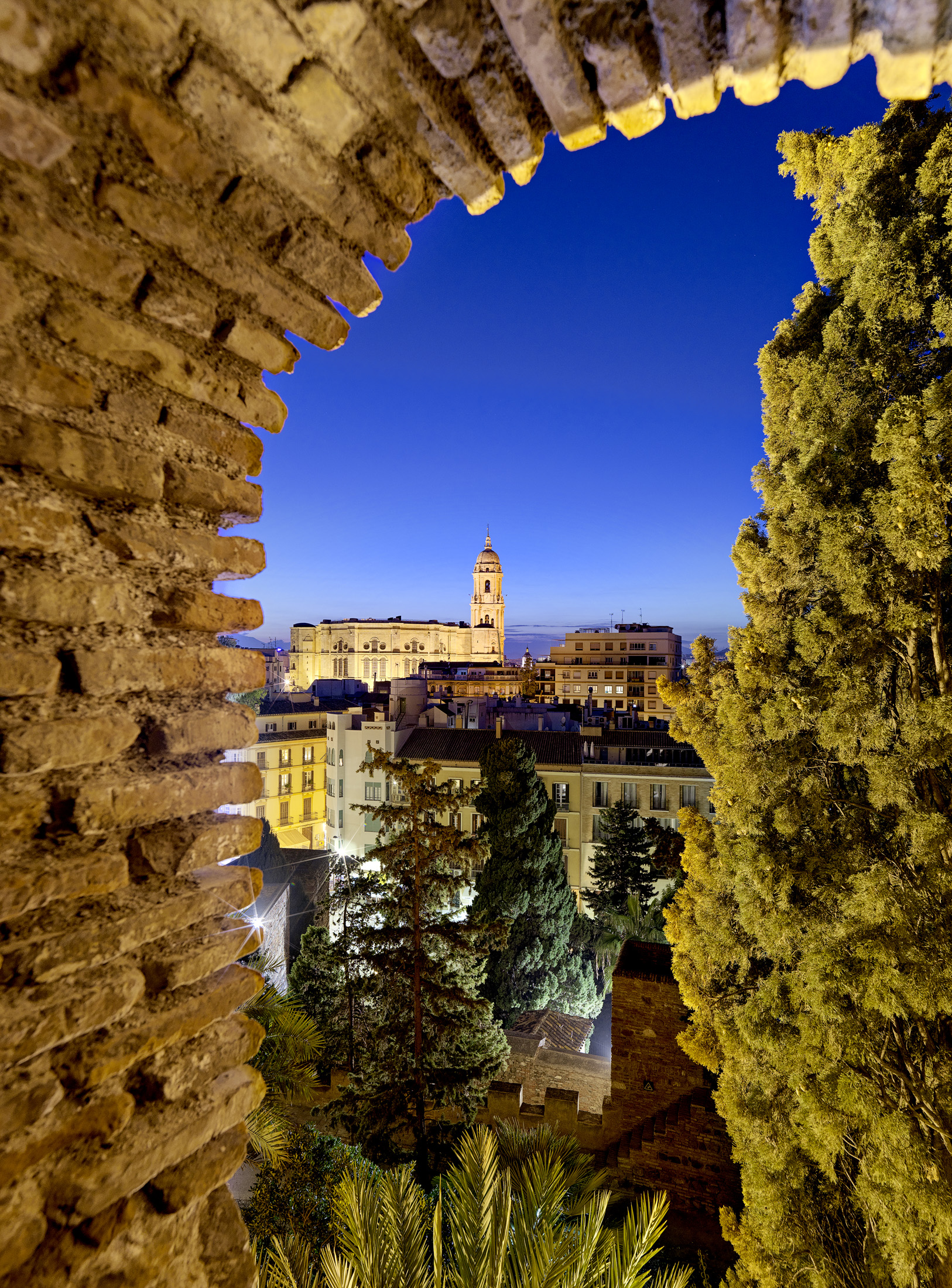The enclave. Alcazaba and Gibralfaro Castle
The Alcazaba and Gibralfaro Castle are part of a strategic enclave that reveals its importance by its dominance over the city of Malaga during the Islamic settlement.
Malaga follows a historical model of a city opening on to a bay, surrounded by the southern foothills of the Malaga Mountains, and with the river Guadalmedina flowing through its historic centre. Mount Gibralfaro, named after the Arabic gíbal al-faruh (giblafaruh – mount of the lighthouse), is 130 metres high. The initial origins are considered to be Phoenician, as a Phoenician settlement extended from the slopes of Mount Gibralfaro to Calle Císter and Ibn Gabirol Gardens, and southwards to the sea. The existence of a fully consolidated and walled city dating back to the 8th century BC has been confirmed by the remains that have been found. This settlement was contemporary to the important commercial enclave of Cerro del Villar, located at the mouth of the river Gualdalhorce.
Later, when classical sources (mostly accounts of Greek and Roman journeys) describe the location of Malaka, Mainake and Malacca – its Punic, Greek and Roman name, respectively – they always mention a promontory that dominated the city and served as a reference point for navigation. It was not until the Islamic settlement that the urban structure of the city was configured around the mountain as we know it today, with Gibralfaro Castle at its top, and the Alcazaba, the Coracha and the Jardines de Puerta Oscura on its slopes.
Thus, this is a mountain that stood at the very centre of the life and urban configuration of the Islamic city, made up of the medina, the Alcazaba, Gibralfaro Castle and the outskirts.

